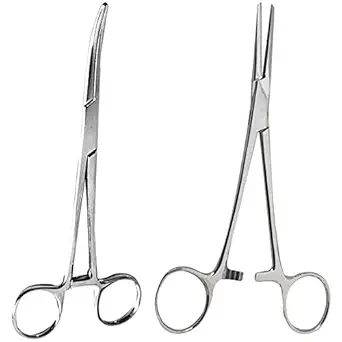surgical instruments used to grasp, manipulate, or hold tissues, objects, or other instruments during medical procedures. They resemble tweezers but are generally more robust and can be used in various settings, including surgery, dentistry, and obstetrics. Forceps come in various shapes and sizes depending on their specific purpose, and they are essential tools in both minor and complex medical procedures.
Types of Forceps:
-
Tissue Forceps:
- Used to hold or manipulate tissues during surgery.
- They are typically serrated to provide a firm grip.
- Examples: Adson forceps (used for delicate tissue handling) and Debakey forceps (used for vascular surgery).
-
Hemostatic Forceps (Clamps):
- These forceps are used to clamp blood vessels or tissues to control bleeding during surgery.
- They are designed to apply pressure to the tissue and can be locked into place.
- Examples: Mosquito forceps, Kelly forceps, and Crile forceps.
-
Obstetrical Forceps:
- Used during childbirth to assist in delivering the baby, especially in cases of difficult labor.
- They help gently grasp the baby’s head to guide it through the birth canal.
- Examples: Simpson forceps, Piper forceps.
-
Dental Forceps:
- Used by dentists to extract teeth or manipulate oral tissues.
- The tips are designed to fit around a tooth or its root for a secure hold.
- Examples: Upper molar forceps, Lower molar forceps.
-
Splinter Forceps:
- Small, fine-tipped forceps designed for removing splinters, foreign bodies, or fine objects from the skin or other surfaces.
- They are typically used in emergency or outpatient settings.
Features of Forceps:
- Tips: Can be straight, curved, or serrated, depending on the intended use.
- Material: Usually made from stainless steel, making them durable and resistant to rust or corrosion.
- Locking Mechanism: Some forceps feature a locking mechanism to hold the grasped tissue or object securely without continuous manual pressure.
Common Uses:
- Grasping and holding tissue or organs during surgery.
- Clamping blood vessels to control bleeding.
- Assisting in childbirth.
- Removing foreign objects such as splinters or glass.
- Grasping objects or tools during delicate procedures.


Reviews
There are no reviews yet.